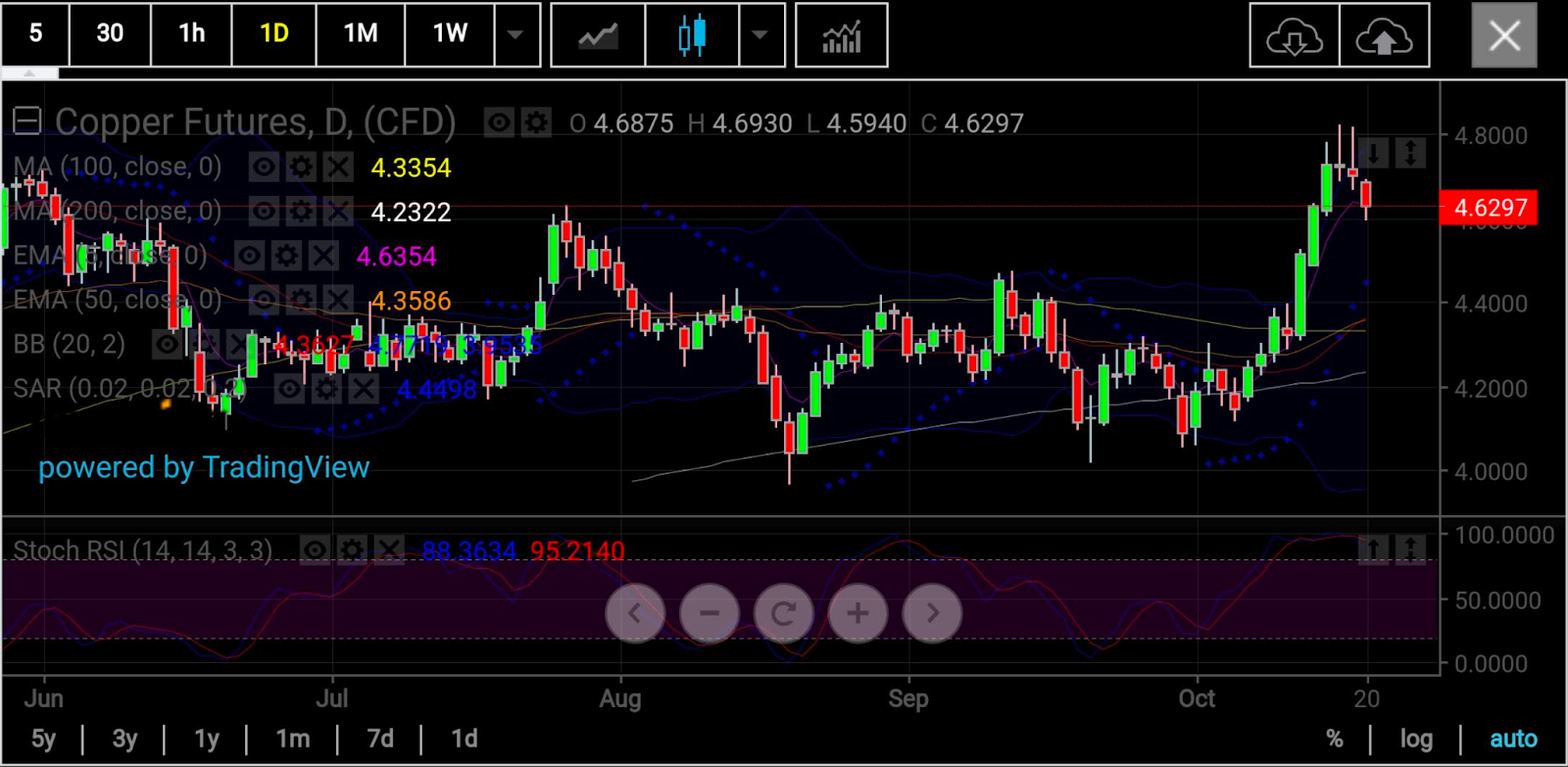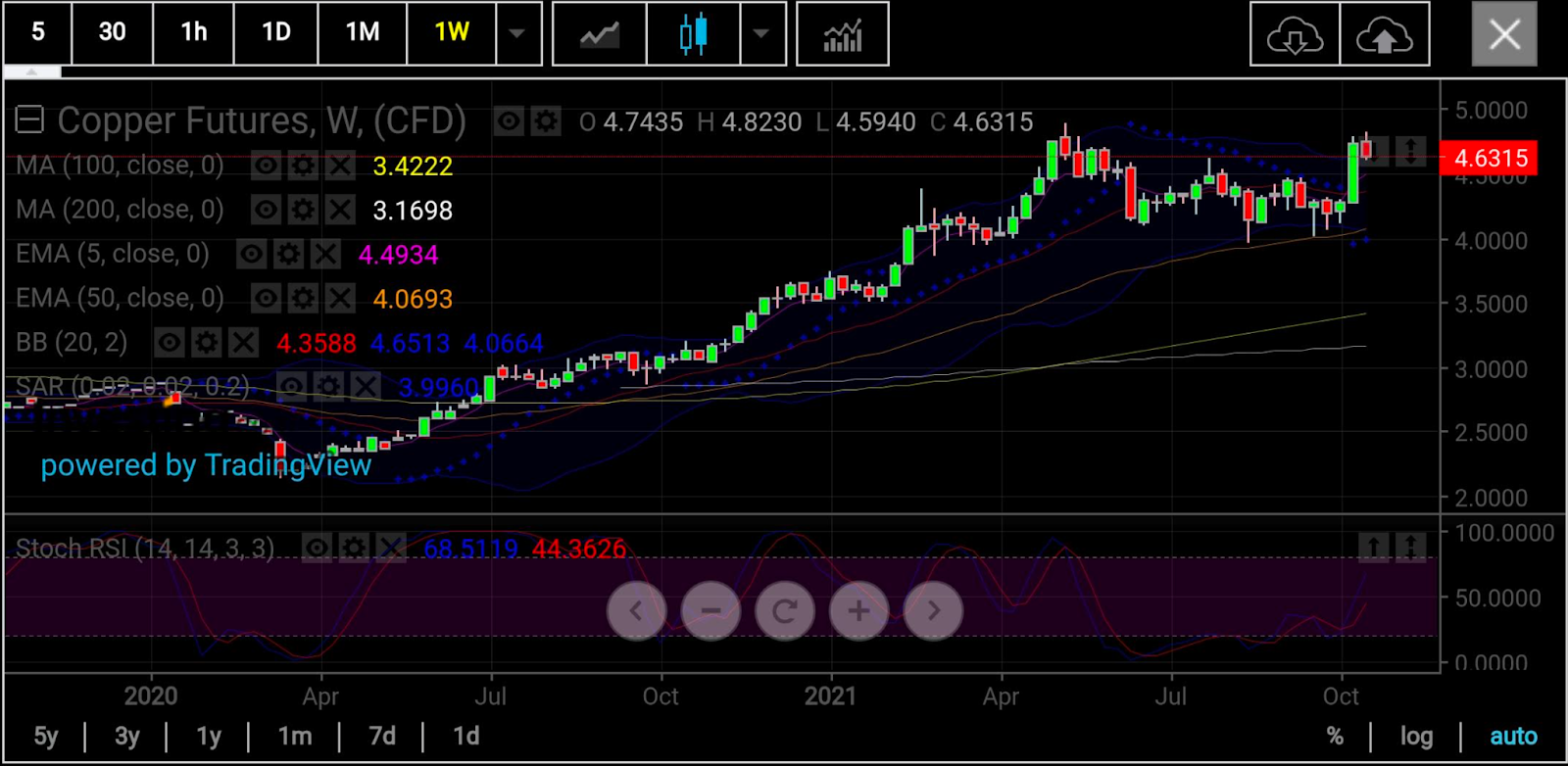The disruption across global supply chains is bloating prices of commodities to levels not seen in years. Oil, already suffering from years of under-investment, is revisiting 2014 peaks. Copper could break record highs set in May if technical charts and Goldman Sachs’ projection of underperforming mining output is accurate.
But an extended correction could also wipe out much of the gains made in October, which has so far been the red metal’s best month since February.
As industry portal MetalMiner observed in a commentary on Tuesday, there doesn’t appear to be a lot of consensus around the copper market now.
The International Copper Study Group says the global refined copper market will be roughly balanced between supply and demand this year. The group also forecasts a small deficit of 42,000 tons this year and a huge surplus of 328,000 tons by next year as a wave of new mine supply comes on board.
On the other hand, Goldman Sachs says mine supply is likely to underperform or arrive late to the market. Most importantly, a wave of refining disruption in China—due to power problems—will restrict supply and drive prices up, the Wall Street bank said.

All charts courtesy of skcharting.com
To stress its point, Goldman last week predicted that three-month copper futures on the London Metal Exchange will reach $10,500 per ton—just $246 below its May record high—and that the spot price will likely break through that shortly after.
The difference between the price for spot or prompt metal and that for delivery in three months on the LME has hit an unprecedented $350 per ton, according to the Financial Times.
“In short, it is displaying all the hallmarks of a market under extreme duress,” MetalMiner.
Inventories of physical copper on the LME fell to their lowest levels since 1974 this week, according to Reuters, in a sign of strong demand. In a recent report, Goldman Sachs predicted metal stocks could reach an all-time low by the end of the year. Furthermore, it said stocks could “deplete entirely” by the second quarter next year.
LME copper inventories not already earmarked for delivery stand at just 14,150 tons. That is down from more than 200,000 tons as recently as September.
These, and other bullish factors, have already set into motion a bullish month for the so-called red metal.

US copper’s front-month on COMEX hovered at $4.64 per lb in Tuesday’s pre-open in New York, up more than 13% for October.
If COMEX copper retains its momentum, it could be copper's biggest month since February, when it gained more than 15%.
Also, the current price is just about 25 cents, or 5%, lower than the record high of $4.89 set by COMEX copper in May.
But COMEX copper has also undergone three straight days of correction since its last positive close of $4.73 on Oct. 15.
The 2% drop over the stretch may not be much in the grander scheme of copper’s price action, but it could signal wariness for some investors.

So, is copper at the cusp of a new all-time high?
Possibly, though its current correction could extend first, said Sunil Kumar Dixit, chief technical strategist at skcharting.com.
“Considering the recent high of $4.82 is a few notches short of the May high of $4.88, the daily chart price action is undergoing usual consolidation and distribution,” said Dixit.
“Daily chart hints at a likely correction between $4.40 and $4.20.”
The 50-week Exponential Moving Average of $4.07 would support the mid term momentum for value buyers in the event of an extended correction, said Dixit.
He also cautions that the trend in copper could switch to bearish if COMEX dipped below $3.96 for any reason. “The 3.96 level would be a trigger for the market to move completely to the other side,” he added.
Barring such a pessimistic move, copper’s monthly chart was emitting bullish signals, Dixit said.
“The Stochastic Relative Strength Index had shed its load and is reading at 34/46, in a sign of a bigger wave up towards $5 pricing,” he said.
“A monthly close above $4.88 will set COMEX copper up on the higher-for-longer trend.”
Disclaimer: Barani Krishnan uses a range of views outside his own to bring diversity to his analysis of any market. For neutrality, he sometimes presents contrarian views and market variables. He does not hold a position in the commodities and securities he writes about.
